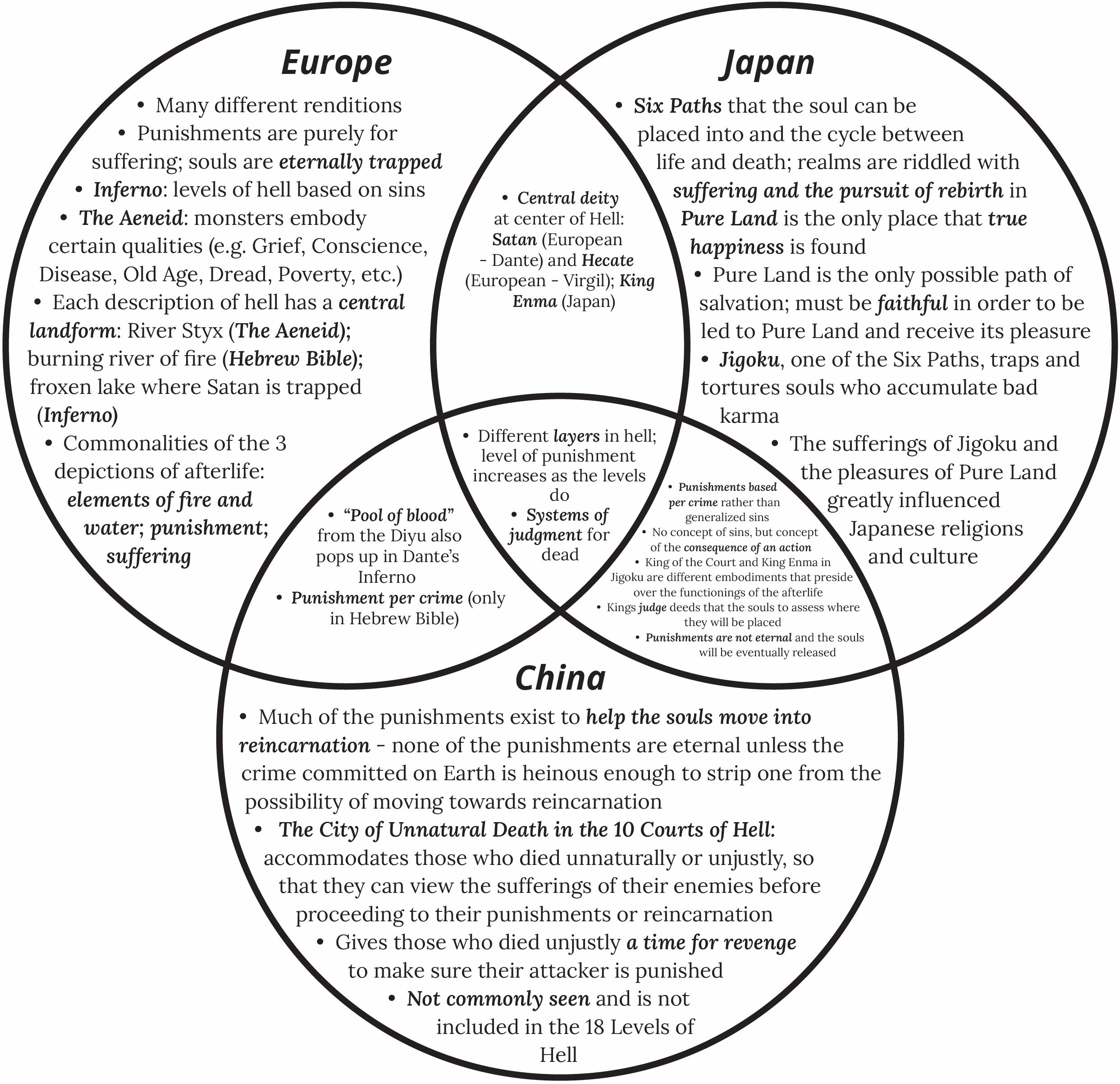 Click here to be able to zoom in.
Click here to be able to zoom in.
After individually researching the European, Japanese, and Chinese renditions of hell, we came across certain similarities between each one. We thought a Venn diagram would work best to organize our thoughts and relay our findings; essentially, the overarching commonality between the three is the use of structured hells with tiers of punishments, as well as the use of systems of judgement to place souls into their respective level in hell. We found this particularly interesting since while Japanese and Chinese culture could get intertwined because of the countries' proximities to each other, all three cultures converged to this one similarity.
Although all three regions had a converging point, we should also note that the religious similarities in cultures and societal thought between China and Japan (Buddhism) was probably a leading factor as to why there were many more similarities between these two regions in their conceptions of hell. Buddhist thought did not originate from China but it did travel from China to Japan, so it does make sense that there would be more similarities in the types of punishments doled out in the Afterlife and the what were perceived as crimes between these two regions than when comparing China and Europe’s versions of hell or Japan and Europe’s conceptions of hell.
Ultimately, our findings indicated that on the higher level, European, Japanese, and Chinese imaginations of hell were comparable in structure and function; however, there were many differences in how each culture implemented types of punishments, levels of hell, and monsters that tormented souls, illuminating the nuanced and rich history behind each one.